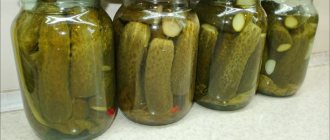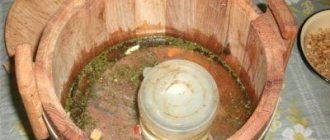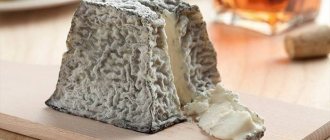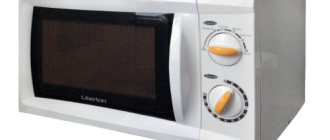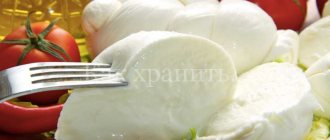What is mozzarella and its types
Interestingly, classic mozzarella is made exclusively from buffalo milk and is called “Mozzarella Bufalo”. However, we are better known for the variety “Fiore di Latte” (“milk flower”), which is made from cow’s milk. Buffalo cheese is tastier, fattier and healthier, as it contains more calcium and other trace elements. Since mozzarella has a short shelf life, it is sold soaked in brine or whey. The balls come in different sizes - “perlini”, tiny as a pea, “cigliegini” the size of a cherry and bocconcini cheese the size of a fist. On sale you can see cheese in the form of traccia braids, smoked mozzarella "affumicata", as well as cheese rolls stuffed with Parma ham, olives, aromatic herbs and sun-dried tomatoes. Cheese gourmets claim that the most delicious and tender mozzarella is giornata, which is prepared a day ago, but for obvious reasons it can only be purchased in Italy.
Salad with couscous
The Mozzarella dish from the recipe below is an original, hearty salad. It immediately contains cheese, a large amount of vegetables, and cereals. Couscous is added to the treat in boiled form. The result is a snack with a calorie content of approximately 163 kcal per 100 g. But this is indicatively relevant only if a light sauce based on olive oil is used. If you use mayonnaise or sour cream, the calorie content of the dish will be higher.
Ingredients
For the dish you need to take:
- couscous – 80-90 g;
- cherry – 5-6 pcs.;
- sweet pepper – ½ piece;
- onion – 1 pc.;
- mozzarella – 180-200 g;
- basil – 2 leaves;
- water – 1 tbsp.;
- salt and spices.
You can use sweet peppers for this recipe not only red, but also any other color. If you want to get the most beautiful, bright appetizer, then you should use pepper quarters of different shades.
Step-by-step cooking process
The cooking process includes several stages:
- Cereals take the longest to prepare according to the recipe, so it’s worth starting with. Couscous needs to be mixed with a pinch of salt and pour boiling water over it. Cereals and liquid are taken in a ratio of 1 to 1. Leave the couscous under the lid for approximately 7-9 minutes.
- While the cereal is steaming, you can work on the remaining components. All vegetables are washed and dried for this purpose.
- Each miniature tomato should be cut into pieces. Preferably in 2-4 parts.
- The peeled onion will be chopped into tiny cubes.
- Sweet peppers will need to be removed from the stalk, internal partitions, and seeds. The remaining parts are best cut into neat small cubes.
- If mozzarella is stored in brine, you will first need to transfer it to a plate and allow excess liquid to drain. Afterwards, the cheese is cut into medium-sized cubes so that the cheese can be felt well in the finished treat. If the mozzarella is in the form of small balls, you can leave them whole or cut each one into halves.
- Washed and dried fresh basil leaves should be finely chopped. Afterwards they will be mixed with the cherry tomatoes, cheese, onions, and peppers prepared above.
- For dressing, mix olive oil with salt and spices. For example, colored ground peppers. Various spice mixtures made specifically for salad sauces are also suitable here.
- All that remains is to loosen the cereal steamed at the very beginning with a fork and transfer it to a large bowl with the remaining ingredients.
After all the ingredients have been mixed, you can serve the salad. It is delicious slightly chilled. If desired, such a treat can even be served at the table as a light, tasty and healthy side dish. Then you can supplement it with cutlets, chops, meatballs or any other meat dishes.
How mozzarella is made in Italy
Italians are confident that young pickled cheese can only be obtained from the freshest milk, when no more than half a day has passed since the cow was milked. The milk is fermented using rennet, after which the whey is heated to 90°C. The cheese is “kneaded” using a special wooden stick until the mass becomes elastic and elastic. After that, balls are rolled out of it directly with your hands and braids are braided. The cheese was named “mozzarella” after the name of the mass - mozzatura, which means “trimming”.
Properly prepared mozzarella has a shiny and smooth surface, a layered structure, and a delicate and slightly bland taste. There are absolutely no air bubbles in it, and when cutting, a little liquid flows out of the cheese.
Italy without mozzarella is not Italy
Mozzarella is considered one of the symbols of Italian cuisine. It is added to pizza, soups, salads, lasagna, pasta and casseroles. Smoked mozzarella melts well, so it makes delicious hot sandwiches. The crescent-shaped calzone pie and the national caprese appetizer with tomatoes and basil, repeating the colors of the Italian flag, cannot be complete without mozzarella.
Mozzarella is usually served with aromatic olive oil, balsamic vinegar, olives, tomatoes and fresh herbs - arugula, parsley and basil. Delicate mozzarella with fruits and berries turns into an exquisite dessert that will not ruin your figure and will delight those with a sweet tooth. In this case, it is better to use mozzarella made from sweeter cow's milk.
Cooking mozzarella at home: base for cheese
You can also make mozzarella at home. For this you will need 4 liters of full-fat village milk, 1.5 tsp. citric acid, 170 ml water and ¼ tsp. rennet (pepsin), which is sold in pharmacies or online stores for cheese makers.
Dilute citric acid in 120 ml of cold purified water (without chlorine), and dissolve the enzyme well in the remaining 50 ml of water at a temperature of about 34°C. Pour milk into the pan, heat it to 12–15°C, add citric acid and stir. Place the pan on low heat and, continuing to stir, heat to 32°C. Next, pour in the rennet and stir the mixture for 30 seconds, continuing to heat it. Turn off the heat, cover the container with a lid and leave it for 5-10 minutes. There are different recipes for homemade mozzarella, but the basis for all recipes is the same.
Making mozzarella at home
Cheese yield 12-15% of milk volume (about 6.5 kg of cheese)
Ingredients
- 50 liters of milk (cow, goat, sheep);
- Sachet “Natural Rennet / Microbial enzyme “Rennet”;
- 15 ml of 10% calcium chloride solution (if the milk is pasteurized);
- A packet of thermophilic starter for Mozzarella.
Equipment
- 50 l saucepan;
- Soft cheese mold or colander;
- Skimmer;
- Cheese lyre or knife;
- Two bowls;
- Fabric and rubber gloves.
Preparation
- Heat the milk to 38℃, add a packet of thermophilic starter for Mozzarella. Mix well with a slotted spoon or lyre. To cover with a lid.
- Leave the milk to mature for 30 minutes.
- Dilute a sachet of Natural Rennet/Rennet Microbial Enzyme in 50 liters of boiled water at room temperature. Dilute calcium chloride in 50 ml of water.
- Add a mixture of calcium chloride and rennet to the milk, mix well. Cover with a lid and leave to form a curd for 45 minutes.
- After 45 minutes, a dense clot with a “clean break” should form. It must be cut with a cheese lyre or a special knife into cubes with a side of 2 cm
- Stir for 10 minutes. If the temperature of the cheese mass drops below 35℃, then it is necessary to heat it again to 35℃ while mixing. Then leave for 5 minutes so that the cheese grain settles to the bottom.
- Remove most of the whey so that the cheese grain is visible. Then leave the cheese mass for 1 hour, stirring it every 10 minutes so that it does not stick together. During this time, the acidity should increase. Then the temperature must be maintained at 35℃.
- Transfer the curd grains to a colander or mold. It is necessary to keep the workpiece warm at a temperature of 36-38℃. To do this, you can pour a little hot water into a pan, place it on a wire rack, place the mold with cheese in it, and close the lid. You can leave the hot whey in a large saucepan, above it a colander or a mold with cheese. To cover with a lid.
- After two hours, the acidity level should be reached at which the cheese mass acquires the ability to stretch pH = 5-4.5.
- If you do not measure acidity, then you can do a tensile test: cut a small piece from the workpiece, put it in water at a temperature of 85℃. If after 1-2 minutes the cheese warms up and begins to stretch more than two or three times its size and does not break, then it’s time to stretch the cheese.
- Cut the cheese into cubes with a side of 1.5 cm. Heat the water to 85℃. Prepare two bowls of water, one with 85℃ water and the other with ice. Add a little salt to hot water (2 heaped tablespoons per 3 liters of water). Add more salt to ice water (5 heaped tablespoons per 2 liters of water).
- Wear fabric gloves and rubber ones. Take a handful of cheese cubes and place them in hot water. The cheese will begin to heat up; it needs to be collected into a single plastic lump. When a lump has formed, you need to stretch it into three or four lengths, then fold it in half. Stretch and fold again. This needs to be repeated three times; if the mass has cooled down and does not stretch well, then it can be immersed in hot water again. There is no need to heat and stretch for too long, otherwise the cheese will become too dense.
- Then you need to divide the mass into two parts, roll them into balls and put them in cold water. It is also necessary to form balls from the remaining cheese cubes.
- The mozzarella should sit in the brine for 1 hour. After this, it can be put in a food container and stored in the refrigerator without brine, but it is better to fill it with brine for longer storage.
Preparing brine for Mozzarella
- 10 glasses of water at room temperature
- 150 gr. Rock salt
- 2.5 ml 9% vinegar
- 20 ml of 10% calcium chloride solution
Boil water, add salt, mix well. Leave to cool to room temperature. Then carefully drain so that the dirt from the salt remains at the bottom of the pan. Add vinegar and calcium chloride to the brine and mix. Pour this solution over the mozzarella balls.
based on materials from the site https://tokomelit.ru/
How to make mozzarella balls
In 10 minutes the mass should curdle and turn into soft cheese. Cut it into squares and heat the contents of the pan to 43°C over low heat, stirring constantly - this should take about 10 minutes.
Now remove the compacted clumps of cheese with a slotted spoon and place them in a colander. Let the whey drain and return it to the pan.
Heat the serum to 85–90°C and wear rubber gloves. Pinch off a small piece from the hardened cheese mass and lower it on a slotted spoon into the hot whey for 5-10 seconds. Take out the cheese and start stretching and folding it in half, as if you were making puff pastry. Once the piece has cooled, place it back into the hot whey and repeat the stretching and folding process as many times as necessary. The cheese mass should become very elastic and viscous. Now make a ball, sausage or braid - whatever you like! Dip the finished balls into cold whey or ice brine, which is prepared in a ratio of 1 tbsp. l. salt per liter of water. After half an hour, place the container with the balls in the refrigerator.
Mozzarella recipe (traditional method)
Mozzarella
soft young cheese
In the traditional version, Mozzarella is made from black buffalo milk, but cow and even goat milk are perfect for its preparation.
We offer an option for making Mozzarella from the simplest cheese such as Brynza or Imeritinsky.
Calculations for a cheese factory of 10 liters (maximum working volume 9 liters)
Ingredients:
- Milk 9 liters;
- Rennet ½ teaspoon;
- Calcium chloride ¼ teaspoon;
- Mesophilic starter CHN 19 ¼ teaspoon;
- Salt (for the brine in which the Mozzarella will be stored);
- Water
Inventory:
- Cheese factory;
- Cheese mold (large, flat);
- Thermometer;
- Drainage bag (optional);
- Knife or propeller knife;
- Heat-resistant gloves or thick rubber gloves + any warm gloves or tops;
- Small saucepan about 3 liters;
- Cold water container.
Cooking process
Preparatory stage:
We take 9 liters of fresh milk and leave it in the refrigerator for 1.5-2 or even three days. This is an extremely important point, since the bactericidal properties of fresh milk will not allow the process of milk fermentation to proceed correctly. Fresh milk will not react correctly to the starter and the cheese curd will subsequently become loose and the whey will not separate well.
The next question is to pasteurize or not to pasteurize. There are exactly two options here:
- We do not pasteurize milk, if you take it from a trusted and known place, it comes from one cow;
- We pasteurize milk if you bought it, for example, at the market, in an unfamiliar farm, or if it comes from different cows.
Pasteurization: milk should be heated to a temperature of 63-65°C and maintained at temperature for 30 minutes to destroy possible pathogenic microflora.
Stage 1: preparing the simplest cheese
Pour the milk into the dairy and heat it to a temperature of 35°C, or cool the milk to this temperature if you have previously pasteurized the milk. Don’t forget to stir the milk periodically during the process to ensure even heating.
The temperature has reached 35°C, it’s time to add mesophilic starter CHN 19 in the amount of ¼ teaspoon, scatter it evenly over the surface of the milk and let it get wet, then mix the milk well and leave for 30 minutes to activate.
30 minutes passed and it was time for the liquid ingredients. The milk temperature should be 35°C. Dilute in 50 ml. water ½ teaspoon of rennet, do the same with ¼ teaspoon of calcium chloride. Before adding the above, thoroughly swirl the milk in the pan and pour in the liquid ingredients gradually, which is important for uniform distribution throughout the entire volume. Close the lid and wait 30 minutes for a clot to form. To determine the readiness of the clot, we make a small cut on the surface; the cut should be smooth and filled with serum. If the whey has not yet separated, you must wait a few more minutes.
Next follow the manipulations to obtain the cheese grain. We cut the curd with a knife, “propeller” or lyre into cubes with a side of about 3-5 cm, in the future this will become a grain of cheese. Mix the entire volume from bottom to top, thereby “drying” the cheese grain for 10 minutes and gradually warm it up to 38°C. If you want to make the cheese salty, you need to scoop out or drain as much whey as possible, then sprinkle salt evenly over the surface of the grain (about 1 teaspoon) and mix thoroughly.
For the convenience of further manipulations, scoop out a little whey from the pan and transfer the cheese grain into a mold (you can put a drainage bag or gauze in it, this will help you squeeze out the excess whey faster).
The cheese should be cooled for a couple of hours at room temperature and turned over 2-3 times.
Before the next stage, keep the cheese in the refrigerator for 2-3 days, turning it over every 12 hours for uniform ripening.
We don’t want to wait two days, we carry out the procedure for “urgent” ripening of Brynza. Place the mold with cheese in the cheese factory for 2-3 hours and maintain the temperature at 36°C.
Stage 2: preparing Mozzarella
2-3 days have passed, our raw materials - the simplest cheese like Brynza, have ripened, we begin to prepare Mozzarella cheese. At this stage you will not need a cheesemaker; we will use a small saucepan.
Things to take care of in advance. First, we check whether there is salt in the house, in case there is a sudden desire to add salt or add salt to the Mozzarella by dipping it in brine, and of course, salt will be needed when preparing the brine in which we will store the final product. Second, but no less important, are gloves to protect your hands while forming the Mozzarella balls in the hot brine. These can be specialized heat-resistant gloves (can be found in online stores of goods for cheese making) or a simple combination of thick rubber gloves and any warm gloves or tops. Third, freeze the ice or put water in the freezer, you will need it when we cool the Mozzarella.
So, we’ve all studied everything and taken everything into account, let’s move on and prepare the hot brine (hot water if we plan to add salt). Take the cheese out of the refrigerator. Pour about two liters of water into the pan, add some salt if you want, and heat to 90°C. Use cold brine or cold water to cool the Mozzarella, the water should be as cold as possible, ice or water from the refrigerator will be helpful. Don’t forget about gloves and get started, take some Brynza, tear it into pieces and throw it into hot brine to warm up to achieve viscousness. We collect all the melted pieces together and begin the process of stretching and folding to form the layering of the future cheese, we repeat the action several times, do not forget to dip the mass in hot brine or water, the temperature must be maintained around 85-90 ° C. We fold the viscous mass into a ball with the edges inward, separate the resulting ball and place it in cold brine or water.
Magnificent, tender, oozing milk Mozzarella is ready. There is an opinion that the fresher the Mozzarella, the tastier it is. However, in the refrigerator in salted brine it can be stored for up to two weeks, and even from a little leftover you can make pizza or quiche.
Mozzarella: secrets and subtleties of preparation
For mozzarella, use only proven country whole milk of the highest fat content - nothing else will work. Do not use tap water due to its high chlorine content, since it does not contain bacteria and the cheese will turn out “dead”, and it can be stored for no more than 2 days. The pan must be made of a material that does not contain aluminum, otherwise it will react with acid and worsen the taste of the dish.
Measuring temperature, stirring and infusion time are important points. If you want to get high-quality mozzarella, you shouldn’t make it by eye; everything needs precision. Some housewives wear a pair of warm gloves under rubber gloves - in this case, you don’t need to use a slotted spoon and do everything with your hands.
You can add salt to the hot whey or water in which the cheese piece will be dipped. Then the mozzarella will be salted during the kneading process. When kneading, you can add spices and finely chopped olives to the hot cheese mass - it turns out very tasty!
Eggs Neapolitan style
If you made mozzarella at home according to the recipe above, then you can easily get Neapolitan eggs. This incredibly simple, tasty and satisfying Italian breakfast will please your household.
Wash and dry a large tomato, cut it in half, remove the seeds and cut into cubes. Place the cubes in two baking dishes, season with salt and pepper, sprinkle with thyme leaves and drizzle with olive oil.
Place a slice of mozzarella weighing about 50 g on top of the tomatoes, sprinkle a tablespoon of Parmesan cheese on each form. Beat in 1-2 eggs depending on the size of the mold and place in the oven for 10-15 minutes, preheated to 200°C. The yolk should remain liquid.
Sprinkle the finished dish with thyme and Parmesan, garnish with herbs and serve with fresh fragrant bread.
Mozzarella salad with figs and walnuts
Mozzarella goes amazingly with both vegetables and fruits, so a salad with herbs, walnuts and figs is a classic of the genre.
Rinse and dry the salad mixture. Cut 6 pieces of figs into 4 parts. Tear 125 g of mozzarella into pieces with your hands.
Place salad mix, mozzarella and figs, and toasted walnuts on a plate. Prepare sauce from 3 tbsp. l. balsamic vinegar, 2 tbsp. l. fig jam and 3 tbsp. l. fragrant olive oil. Dress the salad and serve immediately as a side dish or on its own.
Caprese salad
Dishes with Mozzarella, recipes for which are published later in the article, include a variety of salads. One of the most popular among them is Caprese. This is a traditional cold Italian appetizer. The name of the treat appeared for a reason.
The salad owes it to the island of Capri, where the recipe originated. This is the simplest snack - light, quick. But it surprisingly combines several components with contrasting flavors. Interestingly, in the appetizer you can see the colors of the Italian flag in the products.
Ingredients
For the dish you need to take:
- tomatoes – 2 pcs.;
- mozzarella – 120-140 g;
- olive oil – 2 tbsp. l.;
- fresh basil – 25-30 g;
- balsamic vinegar - 1 tbsp. l.;
- salt, spices.
Don't overdo the spices in the recipe. It will be enough to take only ground black pepper. It is important to choose the right tomatoes for your treat. They should be ripe, juicy and sweetish. Tasteless winter vegetables do not work well for this snack option. Frozen basil will not work for this recipe. You need to take fresh herbs.
Step-by-step cooking process
The cooking process includes several stages:
- You can start the process with tomatoes. They are washed, dried and carefully cut into thin slices. The pieces should be even so that the finished dish looks beautiful and appetizing.
- It is best to choose mozzarella in the form of medium-sized balls. This dairy product is removed from the brine and lightly dried. Otherwise, the liquid will leak out into the salad and spoil its appearance. Afterwards the balls can be cut into slices. The thinner they turn out, the tastier the salad will be. In general, thin slices of all components in the dish are the main feature of the appetizer under discussion.
- Just wash and dry the basil leaves.
- Afterwards you can start forming the treat. All prepared components will be placed on the plate one by one, overlapping. It is best to take an oval or rectangular elongated dish for this. There are several options for laying out the components. For example, in 2 layers next to each other. But you can also take a round plate and arrange the food in a circle.
The components are sprinkled with balsamic vinegar and olive oil on top.
It will be even tastier to use balsamic cream sauce for the dish under discussion. The latter is milder in taste and has a thick consistency. You can also add salt to the delicacy to taste and sprinkle it with ground pepper.
Pasta with mushrooms and cream sauce
Cut 400 g of fresh champignons into thin slices and fry them in 2 tbsp. l. olive oil along with finely chopped 4 cloves of garlic, 1 tsp. dried basil and ⅓ tsp. sweet ground paprika. After 3 minutes, salt and pepper the mushrooms, and then pour 250 ml of heavy cream into the pan.
Stir the sauce, add half a glass of grated Parmesan and 100 g of mozzarella cut into pieces. Bring the mixture to a boil and simmer over low heat, stirring until the cheese melts. Add 5 sprigs of finely chopped parsley to the sauce.
Boil 250 g of pasta until al dente and drain the pasta in a colander, reserving some of the cooking water. Mix the pasta with the mushroom sauce and, if necessary, thin it with pasta broth to the desired consistency. Sprinkle the pasta with chili pepper to taste and enjoy a classic Italian lunch!
Homemade mozzarella, unusually tasty and tender, will certainly please your household, and especially children. Pamper your loved ones with mozzarella dishes, because it is not only tasty, but also very healthy. Share with us recipes and photos of the most interesting dishes!
Pizza with grated mozzarella cheese
Dishes with Mozzarella, recipes for which can be found to suit every taste, often include baked goods. After all, the cheese in question melts deliciously, for example, on the surface of a pizza. Today there is even mozzarella on sale, which is sold labeled “for baking” or “for pizza.” The calorie content of such a treat is approximately 283 kcal per 100 g.
Dishes with Mozzarella, a recipe for making delicious Italian pizza.
And his BJU:
| BJU | Value in g (per 100 g) |
| Squirrels | 11,8 |
| Fats | 14,2 |
| Carbohydrates | 25,1 |
Ingredients
For the dish you need to take:
- pizza dough with olive oil – 370-400 g;
- ripe but firm tomato – 1 pc.;
- tomato paste - 4.5-5 tbsp. l.;
- olives – 11-12 pcs.;
- parmesan – 45-50 g;
- mozzarella – 160-180 g;
- salami sausage – 120-130 g;
- onion – 1 pc.;
- basil – 2-3 sprigs;
- salt, oregano, wine vinegar.
Generally speaking, any pizza dough will work. It is especially tasty to use thin with the addition of olive oil. The tomato should be large. Instead of tomato paste, you can also use sweet or spicy ketchup. You will need to choose pitted green olives.
Step-by-step cooking process
The cooking process includes several stages:
- The dough will need to be prepared in advance. Already when it rises, you should mix the mass, and then roll it out to a flat cake. The optimal thickness for this base is 6-7 mm.
- Afterwards, the base can be moved into a mold or onto a baking sheet (the dishes should be oiled with any vegetable fat). But you need to use a minimum amount of oil. If you use too much of it, the pizza may end up greasy.
- Be sure to first pierce the base with a fork in several places. This is necessary so that it does not swell during the process.
- Onions without husks will be cut into thin strips. Wine vinegar will be poured immediately into the vegetable pieces. The latter will be enough 1 tbsp. l. It is not necessary to use wine vinegar; you can use fresh onions. But with a pickled additive, the filling will ultimately turn out tastier. Leave the onions in vinegar for about 50-70 minutes. Afterwards you just have to squeeze it out a little. There is also an option for hot, quick pickling of onions. For him 2.5-3 tbsp. wine vinegar mixed with ½ tbsp. water. Afterwards, the mixture is brought to a boil and the onion pieces are poured into it. After just 12 minutes, the pickled vegetable can be lightly rinsed and squeezed.
- The tomato should be washed, dried and cut into thin slices. Salami can also be ground into shreds. First, the thin outer skin is removed from the sausage.
- Olives need to be cut. For example, thin rings or just halves.
- All that remains is to grate the cheese: parmesan - finely, and mozzarella - coarsely.
- The dough will be coated with paste/ketchup. The entire base should be covered with the chosen sauce. On top it is sprinkled with a couple of pinches of dry oregano. It is this additive that gives pizza that very bright taste, so you should not exclude it from the recipe.
- Next, you need to evenly distribute the pickled onions and grated Parmesan. It’s delicious to add grated garlic to the latter. Another tasty option is to puree the Parmesan cheese in a blender with basil leaves. Then the end result will be a greenish aromatic mass.
- Afterwards, slices of sausage and chopped olives will be distributed. All that remains is to fill the filling with large shavings of mozzarella. It is recommended to sprinkle the treat with a small amount of olive oil at the end.
Pizza should be baked in an oven preheated to 195-200 degrees. The process will take approximately 17-20 minutes. A completely finished treat should be cut into 6 or 8 pieces with a special roller.
Pizza tastes best warm or hot.



